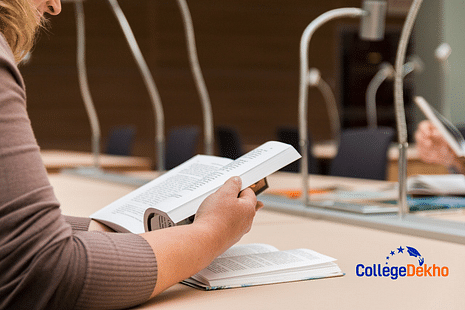
COMEDK UGET 2025 Current Electricity Practice Questions with Solutions:
With a couple of months left for the COMEDK 2025 entrance exam, it is time that you take your preparations a level up with question bank and COMEDK sample questions. One chapter from the
COMEDK UGET 2025 Physics syllabus
that particularly needs to be studied and practiced is Current Electricity. The chapter carries around 10-13% of weightage in Physics, making it an important section for
COMEDK UGET 2025 exam
. 6-8 Current Electricity questions in COMEDK exam are expected this year. To score good marks, you must know what kind of questions or which sub topics are likely to come, and how to solve the questions without wasting much time. COMEDK UGET 2025 Current Electricity practice questions with solutions will help you prepare for the important and challenging areas. Check out the probable COMEDK Current Electricity questions for practice here!
Also Check -
Do or Die Chapters for COMEDK UGET 2025 Physics
Quick Links:
COMEDK UGET 2025 Current Electricity Important Topics
The Current Electricity chapter in COMEDK UGET Physics syllabus features several important sub topics from the 10th and 12th course curriculum. You should prepare all the topics mentioned in the syllabus before you start solving COMEDK Current Electricity questions. In the following table, we have mentioned subtopics covered under the Current Electricity chapter. For a thorough exam preparation, you must study all the topics carefully.
Chapter | Topics |
|---|---|
Current Electricity |
|
COMEDK UGET 2025 Current Electricity Expected Weightage
The Current Electricity chapter covers the fundamentals of current, electricity, and electric potential. Every year, it carries a significant weightage in COMEDK question paper. You can expect around 6-8 questions from Current Electricity. Check out the detailed weightage here.
Topic | Expected Number of Questions | Expected Weightage |
|---|---|---|
Current Electricity | 6-8 | 10-13% |
Also Check -
COMEDK Chapter Wise PYQs for Physics
Quick Links:
| COMEDK UGET 2025 Exam Date | COMEDK UGET 2025 Admit Card |
|---|
COMEDK UGET 2025 Current Electricity Practice Questions with Solutions
The following are some of the most expected questions from the Current Electricity chapter of COMEDK 2025 Physics syllabus. These questions have been curated after analyzing COMEDK UGET previous year question papers and past exam trends. By solving these COMEDK practice questions on Current Electricity, you will have a greater probability of getting familiar questions in the exam and can score a solid 6-8 marks depending on the weightage.
Q1. A voltmeter of resistance 1000Ω 0.5V / div is to be converted into a voltmeter to make it to read 1 V/div. The value of high resistance to be connected in series with it is:
a. 1000Ω
b. 1500Ω
c. 2000Ω
d. 5000Ω
Ans. a. 1000Ω
Solutions: To convert a voltmeter of resistance 1000Ω with a sensitivity of 0.5V/div into a voltmeter with a sensitivity of 1 V/div, we need to connect an additional high resistance in series with the voltmeter.
The original voltmeter reads 0.5 V/div which means for every 0.5 V, the internal resistance is 1000Ω. To make it read 1 V/div, we effectively need to double the voltage range it can measure for the same current passing through the meter.
Let the required high resistance to be connected in series be R s . The total resistance of the voltmeter circuit for 1 V/div, would then be given by:
R total = R v + R s
Given the original voltmeter resistance Rs is 1000Ω and considering we need to double the effective voltage being measured, the total resistance should also be doubled:
Rtotal = 2 x R v
Substituting R v
2 X 1000Ω = 2000Ω
This gives the equation,
R total = 1000Ω +R s = 2000Ω
Solving for R s :
R s = 2000Ω - 1000Ω = 1000Ω
Thus, the value of the high resistance to be connected in series with it is:
a. 1000Ω
Q2. On increasing the temperature of a conductor, its resistance increases because
a. Electron density decreases
b. Relaxation time increases
c. Relaxation time decreases
d. Number of collisions between electrons decreases
Ans. c. Relaxation time decreases
Solution: Let's analyze why the resistance of a conductor increases with the increase in temperature.
A conductor has free electrons that move through the material, and this movement constitutes an electric current. The resistance of a conductor is determined by how easily these electrons can move through the material. The key factors influencing this movement are electron density, relaxation time, and the collision frequency of electrons with atoms.
Now, let's consider each of the options:
Option a: Electron density decreases
This is incorrect because the electron density in a conductor is not significantly affected by temperature. The number of free electrons available for conduction stays relatively constant.
Option b: Relaxation time increases
This is also incorrect. Relaxation time refers to the average time between collisions of electrons. Generally, with an increase in temperature, the atoms in the conductor vibrate more vigorously and electrons experience more frequent collisions, thereby decreasing the relaxation time.
Option d: Relaxation time decreases
This is correct. The relaxation time τ is the average time interval between successive collisions of an electron. As the temperature increases, the thermal energy causes more vigorous vibrations of the atoms in the lattice structure of the conductor. This leads to an increase in the collision rate of electrons with these vibrating atoms, which results in a decrease in relaxation time.
The resistance R of a conductor is given by the formula:
R = m/ne 2 τ
where:
m = mass of an electron
n = number of free electrons per unit volume
e = charge of an electron
τ = relaxation time
From the above equation, you can see that resistance R is inversely proportional to the relaxation time τ. Therefore, as the relaxation time decreases with an increase in temperature, the resistance increases. Hence, the correct answer is:
Option d: The number of collisions between electrons decreases
This is incorrect. With an increase in temperature, the number of collisions between electrons actually increases because the thermal agitation of atoms in the conductor becomes more intense.
Q3. A galvanometer having a resistance of 8Ω is shunted by a wire of resistance 2Ω. If the total current is 1A, the part of it passing through the shunt will be:
a. 0.25A
b. 0.8A
c. 0.5A
d. 0.2A
Ans. b. 0.8A
Solution: Let the total current through the 1 parallel combination be I, the current through the galvanometer be I g and the current through the shunt be I - I g
The potential difference, V ab = (V a - V b ) is the same for both paths, so I g G = (I - I g )S
I g (G + S) = IS = I g /I = S/(S+G)
The fraction of current passing through shunt
(I - I g )/I = 1 - I g /I
= 1 - S/(S+G) = G/(S+G) = 8/(2+8) = 0.8A.
Q4. A resistor of wire 24 cm in length and resistance 8Ω is stretched into a uniform wire of 48cm in length, then the new resistance will be:
a. 16Ω
b. 8Ω
c. 4Ω
d. 32Ω
Ans. d. 32Ω
Solution: The resistance R of a wire is given by the formula:
R = ρLA
where:
ρ is the resistivity of the material,
L is the length of the wire, and
A is the cross-sectional area of the wire.
When the wire is stretched to double its original length (from 24 cm to 48cm), its volume (V = A x L) remains constant because the material is conserved. Thus, if the length L is doubled, the cross-sectional area A must be halved to keep the volume constant.
The new resistance, R’, can then be calculated using the new length L’ 48cm and the new area
A’=A/2, keeping in mind that the resistivity ρ does not change because it depends only on the material:
R’ = ρL'A' = 4 R
Given that the original resistance is 8Ω
R’ = 32Ω.
Q5. A battery is made of 12 cells having emf 5V each. If three cells are unknowingly connected wrong, the resultant emf of the battery will be:
a. 90 V
b. 30 V
c. 60 V
d. 45 V
Ans. b. 30 V
Solution: When cells are connected in series, the total electromotive force (emf) of the battery is the sum of the individual cell voltages. This assumes all cells are oriented correctly, with positive to negative in a chain. If a cell is connected in the opposite direction, its voltage subtracts from the total rather than adds to it.
In this problem, we have a total of 12 cells, each with an emf of 5V. Normally, if all were connected correctly in series, the total emf would be:
Total emf = Number of cells X emf of each cell
Total emf = 12 X 5V = 60 V
However, 3 cells are connected incorrectly, which means their voltage contribution would be negative instead of positive. So, for these 3 cells, instead of adding 3 X 5V, we subtract 3 X 5V:
Adjusted total emf = Total emf without errors - 2 X (emf of 3 wrong cells) Adjusted total emf = 60V - 2 X 15 V = 30 V.
Along with COMEDK UGET 2025 Current Electricity practice questions with solutions, you should also start attempting
COMEDK UGET 2025 mock test
online. The authorities have activated the official links to a set of 7 mock test series at comekd.org that you can practice while preparing/ revising the chapters.
Related Articles
| COMEDK 2025 Physics Formula Sheet | Benefits of Solving COMEDK UGET 2025 Test Series for All Subjects |
|---|---|
Are you feeling lost and unsure about what career path to take after completing 12th standard?
Say goodbye to confusion and hello to a bright future!

Was this article helpful?





















Similar Articles
GATE CS Question Paper Difficulty Level Trends: A detailed analysis
JEE Main 2026 Chemistry High Priority and Low Priority Chapters
Are JEE Main Study Groups Worth It? Detailed Pros and Cons for 2026 Aspirants
How to Prioritize Physics Chapters Based on JEE Main 2026 Weightage and Difficulty
GATE 2026 Mechanical Engineering Expected No. of Questions Topic-Wise
GATE 2026 Civil Engineering Expected No. of Questions Topic-Wise